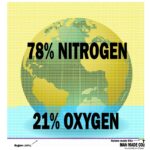
By Steve Haner
Young Virginians are not getting enough instruction on the deadly existential threat of climate change from the news media, their favorite social media sites, Hollywood productions and President Joe Biden’s campaign stump speeches. Virginia’s General Assembly Democrats are demanding that the public schools double down with a wave of new classroom materials.
The curriculum wars at the State Board of Education and in local school board meetings may now move on to a new topic if Governor Glenn Youngkin (R) signs House Bill 1088. The bill is ripe for a veto, having received support from only one Republican legislator out of 68, but after the first 100 or so vetoes, Youngkin’s veto pen may tire.
Should he sign the bill, do not assume the process will go as the patron (Delegate Betsy Carr, D-Richmond) intends. In fact, if the bill is followed to the letter, the resulting materials probably will not be to her liking. The text is short:
A. The Board shall make available to each local school board instructional materials on climate change and environmental literacy that are based on and include peer-reviewed scientific sources.
B. The Board shall develop, adopt, and make available to each local school board model policies and procedures, based on peer-reviewed scientific sources, pertaining to the selection of instructional materials on climate change and environmental literacy, including a requirement for any such selected material to accurately portray changes in weather and climate patterns over time, the impacts of human activity on changes in weather and climate patterns, and the effects of climate change on people and resources.
Any materials that “accurately portray changes in weather and climate patterns over time” will contradict the alarmist narrative of dramatic and dangerous warming. Likewise, the hard data will not demonstrate detrimental effects on people or resources, because nothing much is going on. All the scary media and political narratives of future flood, famine and fire are based on mathematical models packed with assumptions and cherry-picked data, and are rank with uncertainty.
If the state curriculum writers want to stick to “peer-reviewed” sources, here are 1,000 examples which come to this or that conclusion which undermines the alarmist scaremongering. That list is seven years old, so there must be more now. If this bill is law, we’ll find more and provide them to the curriculum writers. The biggest lie of all (and that is saying something) is the claim that “the science is settled” despite ongoing vigorous debate.
Frankly, the best reason to veto the bill is redundancy. Virginia has long had science Standards of Learning that deal with earth science, physics, chemistry and biology, and any other discipline involved in trying to understand short-term weather or long-term climate. More to the point, the Department of Education is already engaged this year in the periodic review and update of the general science SOLs. This would duplicate that effort.
In general, based on a review of the existing SOLs shared by a physicist involved in North Carolina’s standards, the 2018 version is fairly neutral and has a focus on the scientific method. But a closer look is now in order thanks to that bill, to prevent any deterioration resulting from the revisions. A public comment period is already underway.
As to the materials, the state has an online resource for classroom lesson plans already, and any and all topics that cause climate alarmists to swoon can be found there. Concerns about human-caused, detrimental changes to the earth’s climate are a common thread already. Had there been no bill, it might not have been noticed.
Search the term “climate change” and you get 427 results. Search “extreme weather” and you get ten. Carbon dioxide produces 124, the ones on the top of the list about its rising atmospheric concentration, not its chemical properties and certainly not its beneficial effects. Glacier melt, increasing hurricane intensity, sea level rise – all the topics pop up with lesson plans that should satisfy the alarmists.
Many come from one source, the Climate Literacy and Energy Awareness Network, located on the Colorado University campus in Boulder. It has almost 200 lesson plans on that state database, but when a topic is searched, CLEAN’s materials often appear early-on (an algorithm?). Seven of the first 20 lessons on CO2, for example, were from CLEAN. So were the first six when you search “sea level rise.”
The very existence of such an organized, professional effort to infuse a particular point of view into every possible school across the United States is a sign of how serious these advocates are. The myth is that those who challenge the “world is ending” narrative are better funded and organized, but after years on the edges of that movement, trust me, they are not.
A lesson plan from another source, dissected on wattsupwiththat.com by an author I know, covers the claimed issue of “ocean acidification.” Kip Hansen gets deep in the chemistry weeds and reports that the notes for the teachers have some balance, but the classroom lesson itself will end up “tricking the students” into believing the ocean is in crisis.
This new bill provides incentive to gear up and insist both on some balance and a truly scientific approach that puts data over “consensus.” The hard data for Virginia, be it temperature patterns, rainfall, the slow tidal rise (mainly due to subsidence), or crop yields, will prove no cause for alarm. Thanks to the bill, a group is now forming to focus as well on the SOLs.
Existing materials that do not “accurately portray changes” in weather, or which are disputed by “peer reviewed” sources from qualified researchers all fail the General Assembly Democrats’ own unanimously adopted benchmarks and need to be challenged.

Leave a Reply
You must be logged in to post a comment.